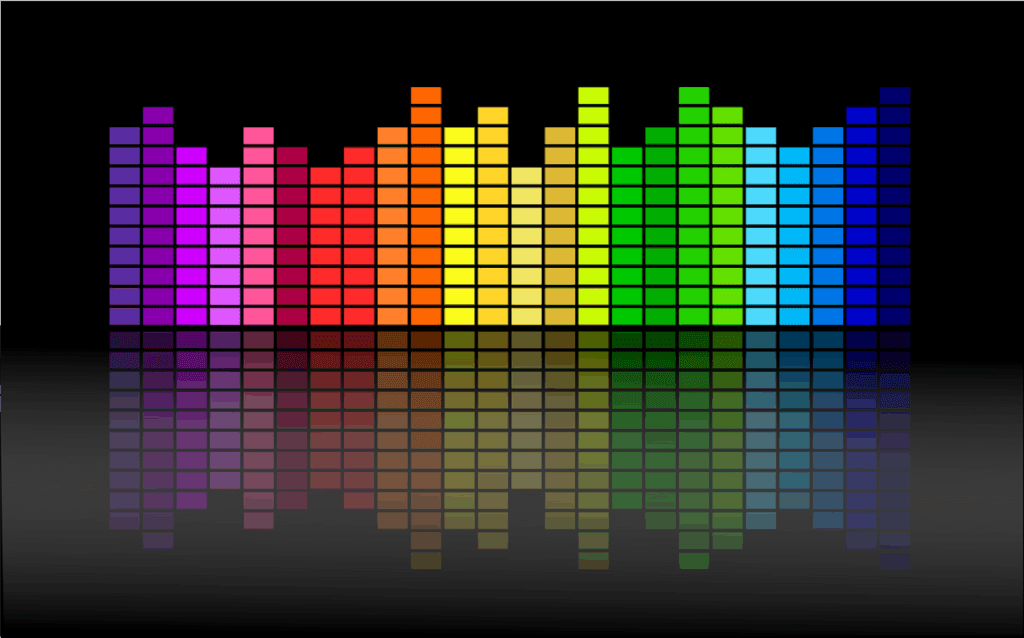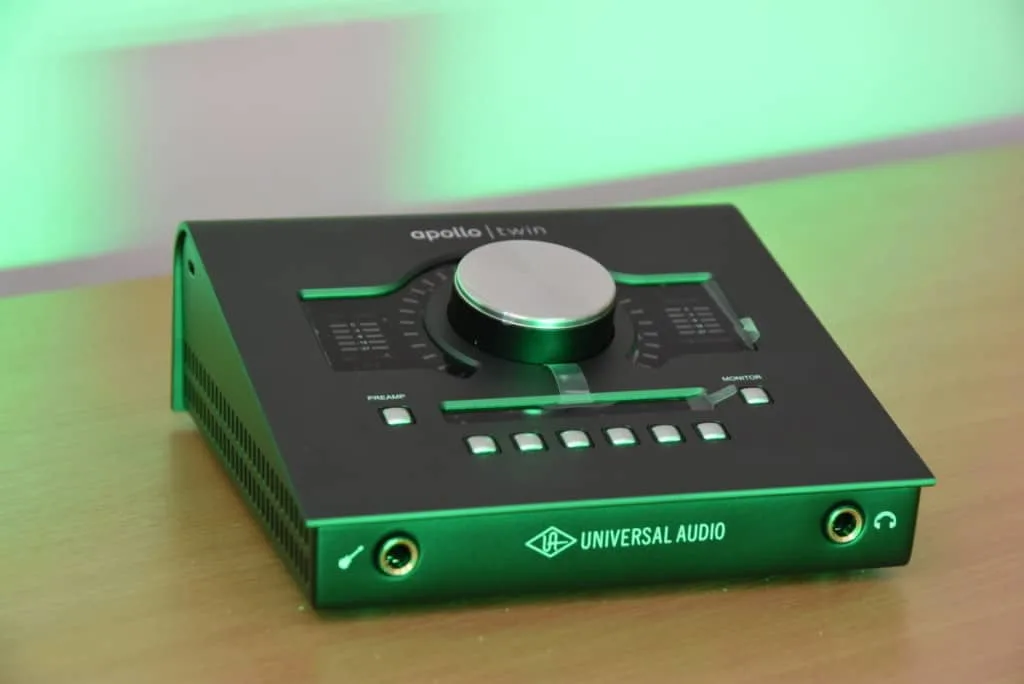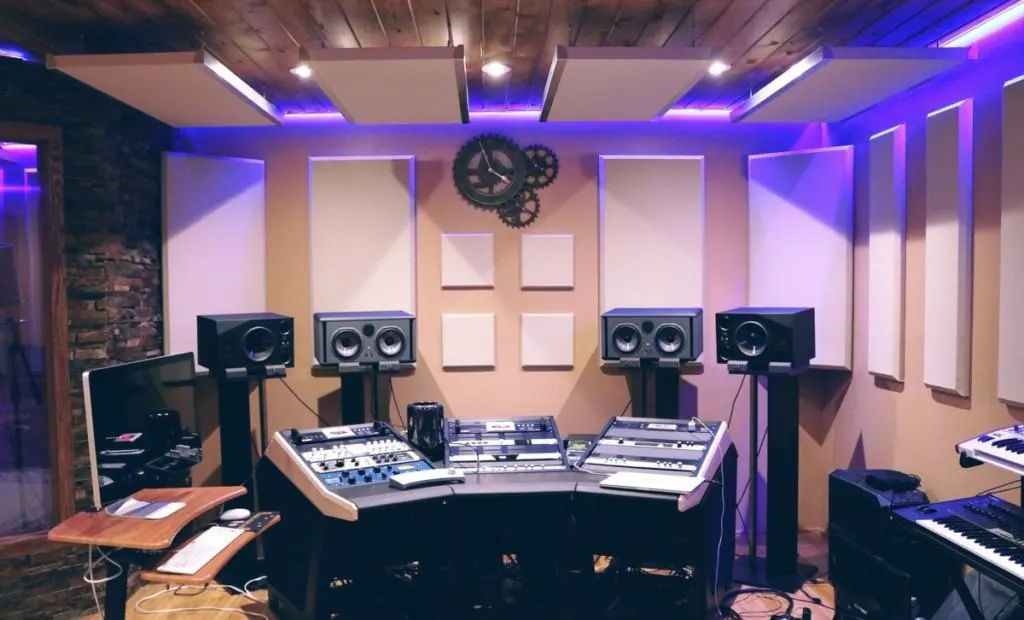I’m sure you’ve heard of this term before. Indeed, it is printed as a logo on most of the equipment you bought for your home studio.
But did you ever take a moment to understand what it means, and why it’s super important for your productions? I have been working with DSP technology for most of my career and I’m proud to say I know a thing or two about it. The reason I decided to write this post is that many people are not aware of the benefits of DSP and how far they can take it.
So, what exactly is DSP?
DSP stands for Digital Signal Processing, which means the ability to digitally process audio signals. This is exactly what the plugins in a DAW do: they modify a digital soundwave to make it sound different. As long as they process a digital signal, they are DSP.
The first part of the answer is always a tad smaller and shorter, but do you want to read the full, XXL answer with some included funny anecdotes? Then follow me, you’re in for a ride!
What Can DSP Do For You In A Home Studio Environment?
Let’s start by taking a look at what DSP power can do in your home studio environment. If you are running a computer with a DAW and an audio interface, chances are you have been using DSP for a long time already.

Signal Processing Through Plugins
Plugins are one of the first things we use in a home studio.
Everything from a simple equalizer to a complicated reverb works with a DSP engine. This means that with the different plugins you can modify an already-recorded signal in real-time. This alone has changed the way we make and record music in the last thirty years.
I mean, I still have some pieces of hardware like my NEVE preamps and beautiful rack-mounted state-of-the-art compressors. I wouldn’t sell them right now, but if I was starting, that wouldn’t be my first investment either.
There is a lot of discussion about whether the sound quality you can achieve with analog processing over an analog waveform is higher than with a great DSP processor working in a very capable computer.
If we think about it from a mathematical point of view, digital will never fully replicate analog because you can get more zeros and ones to resemble the curves of an audio waveform, but it is still a bunch of squares reconstructing a curve.
Is that difference audible and meaningful?
Well, that depends on the project; it is not a must for having fun in your home studio, but a serious discussion for every major studio in the world. For example, Capitol Records Studios still have, and use echo and reverb chambers built before there was a digital reverb pedal. Not to mention the existence of DSP plugins, which weren’t even in engineers’ wildest dreams.
You can see more about it in this amazing video.
In the case of plugins exclusively, the more DSP power you have at your disposal, the more you can run without utilizing your computer´s resources. This is a great asset from some external audio interfaces in the market such as the Apollo Twin Duo by Universal Audio.

- I have written an article on getting started with Audio Interfaces. You can find it here.
Virtual Instruments
Another great step forward in the music-making world is the existence of virtual instruments.
For example, I often map out songs with a virtual drummer. This is to say that I have DSP-powered software that replicates the sounds of a real drummer when triggered via MIDI or the user interface. Back in the day, you couldn’t demo instruments that were not around, unless you did great beatboxing or other instruments with your mouth.
Can you picture me trying to convince my mom at age fourteen to allow me and my friends to cut a record in her living room? Yes, with drums and loud distorted guitars. Nowadays, you can replicate all those instruments and your neighbors won’t even find out a musician lives next door.
I believe virtual instruments are indeed the future of home-music recording. In a world in which space is a growing concern, the smaller, more portable music-making tools will be the ones to dominate the scene in the near future.
You can check this video to see the size of the space in which Finneas and Billie Ellish created some of the duo’s biggest hits.
Also, you can watch this piece, about Oak Felder and his mobile studio working with DSP technology.
DSP And Room Setup
When you buy new and fancy speakers for your studio and you want to calibrate them perfectly to the room, you can use DSP. The entire array of software in the market that works in that direction is based upon DSP that makes real-time adjustments over digital and analog sources of audio.
You can check this video for a whole rundown with hardware.
Check Out MiniDSP 2×4 Here On Amazon.
Voice Recognition, 3D Audio, And AirPods Pro
Moving out from the basement at your folk’s house into the tall towers of Silicon Valley, DSP can do much more than just process the audio signal in your favorite DAW. Those millions of dollars invested in research to expand the DSP universe beyond the limits of the unknown gave us back real-time adjustments on many areas.
For example, the way that the AirPods Plus from Apple scans your ears cavities and adjusts audio reproduction to better match it is done through DSP.
The way smart speakers such as Alexa, Siri, and Cortana work is the same; DSP technology inside them turns analog voice commands into digital actions such as playing your favorite tune from Spotify upon request.
3d audio and surround sound work with a DSP engine that processes digital audio sending it to different speakers thus generating a different audio experience than regular stereo-sounding systems. Great examples of how that type of audio is captured are the modern 3Dio microphones to record ASMR experiences, and the modern Zoom H3 VR.
I have written an article on how to start your own ASMR channel. You can find it here.
Can DSP And Analog Co-Exist?
This is, perhaps, the question of what it all comes down to: can DSP and analog audio devices truly coexist? I guess there might be many answers to that one enigma. Let me give you my reasons why I think they can and will.
· The sum is better than the parts – Those of us who work everyday mixing diverse types of instruments have seen what we can achieve by mixing analog and DSP. For example, if you ever heard the way drums and bass sound on analog tape recorders, you won’t go back to digital. I do it all the time; recording the spine of my tracks on analog tape and then everything else with a mix of virtual and analog instruments in my DAW. Also, adding plugins to analog recordings can take your productions to the next level by mixing formats.
· Technology isn’t quite there (yet) – Don’t get me wrong, I am by no means a purist of old-school gear. What I do consider myself to be is a purist of tone. I don’t care if it is virtual or analog, DSP-fueled, or recorded with a tape-machine as long as it sounds amazing. In that sense, especially for guitars, basses, and other expressive instruments, technology isn’t quite there yet.
· Accessibility and budget – Another reason why I think that analog and DSP can co-exist is that analog is still more accessible from many points of view. Firstly, it is cheaper today to buy some acoustic instruments than their virtual versions. Second, there are more places to buy them; you can get your first acoustic guitar virtually anywhere. Finally, most of the time we receive used instruments that belonged to our parents, siblings, or friends. Seeing my kid play my teenage-years, entry-level Samick Stratocaster through his GuitarRig and adding all the effects I used to save by the dollar to buy. Indeed, he shrugs his shoulders when I speak about tube guitar amps and how we used to load and unload our gear, being a teenager. All he needs is a pair of headphones and his iRig adapter.
· Ease of use – In contrast with the newer generations that were born into digital, those of us who lived through the transition still understand analog better. The ease of use of a guitar amp, microphones, and effect pedals is always going to outdo that of newer technologies for us.
· There are no reasons why not – Finally, there are absolutely no reasons for you to choose one or the other for the moment.

DSP Verdict
I hope I have cleared out in this article what DSP is and why it is important in the context of a home studio.
For most people, they are today their best ally in the creation of sound landscapes. It is much easier and affordable to buy state of the art DSP software to recreate an orchestra playing in Abbey Road Studios than actually doing it. What I mean by this is that technology has helped musicians enormously, and most of that path is made of DSP-fueled technology.
Whatever the future brings for the DSP-world is surely going to work to make things better and easier. Will it ever replace analog with the same audio quality; more importantly, will that matter as much in the future?
For now, the best bet is to work hard to get the best of both worlds to enhance your productions. I hope you become a purist of good audio without being biased by where it comes from.
Happy (analog & digital) recording!
